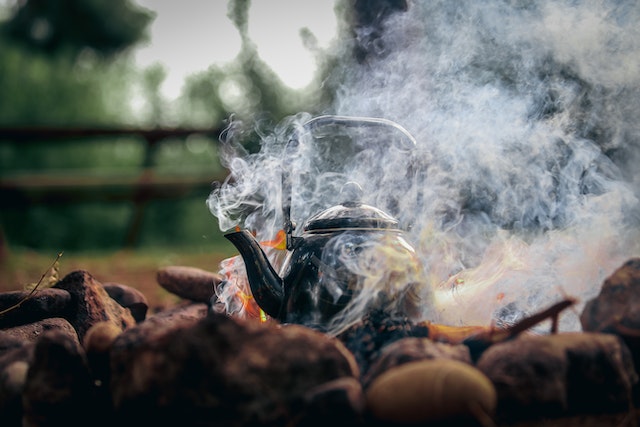
Why are steam burns worse than boiling water burns? Steam burns are more severe than boiling water burns because steam goes through a phase change when it touches your skin, and it can penetrate your pores.
Water is made up of molecules and molecules are made up of atoms. These atoms each have electrons and a nucleus, which contains protons. Electrons always have a negative charge and protons always have a positive charge. The protons of one atom attract the electrons of another atom. If the attraction and the repulsion of these molecules are equal and they can’t break apart they form a stable structure. At this point an object is a solid. With water, this would be ice.
If you add energy to the molecules, in the form of heat, they have enough energy to break away from each other, but not enough energy to escape. One bond will break, and the molecule will move away, but it will quickly be attracted to another molecule. At this point we have a liquid. With water, this would be liquid water.
If you add more heat energy to the molecules, they will reach a point where they have too much energy to be attracted to other molecules and they will fly around randomly. At this point we have a gas. With water, this is steam. Water obviously turns to steam at over 100˚C, depending on the altitude. To get water to turn into steam, the water molecules have to absorb 2260 Joules of heat. The molecules have so much heat energy that they move round a lot more and steam occupies 1600 times the volume of water.
What happens when you burn yourself with boiling water? Our skin and the proteins in our cells are able to function only up to a certain temperature, that means they can survive with a certain amount of thermal energy. When we come into contact with boiling water, the thermal energy in the water is transferred to our skin. That is what causes the burns. Our cells are fine with anything up to 44˚C. Over 44˚C and the tissue starts to get damaged, although we can withstand this for about 6 hours. Between 44 and 51˚C, the amount of injury doubles with each degree increase in temperature. Temperatures about 51˚C will damage the skin instantly. Temperatures above 70˚C will cause full-thickness tissue destruction. At 45˚C damage takes 3 hours, at 50˚C it takes 4 minutes, at 55˚C it takes 30 seconds, at 60˚C it takes 5 seconds and at 65˚C it takes 1 second. When we come into contact with boiling water, the thermal energy passes into the cells and destroys cells and blood vessels on the surface immediately. The damage can go into deeper layers as well. As soon as the burn source has been removed, the body’s immune response kicks in and the area around the burn fills with serum and plasma. It cushions the area, protects it from infection, and gives the white blood cells room to work.
So, why are steam burns so bad? There are two reasons. The first one is that steam has far more thermal energy than boiling water. It takes a lot of energy to turn a liquid into a gas and to turn that gas back into a liquid, all of that energy needs to be dissipated. If you spill boiling water on your hand, it will cool down, transferring most of its energy into your skin, causing damage, and that’s it. When steam hits your hand, it instantly cools down and transfers the energy into your hand as it phase changes to water. This causes far more damage.
The second reason is that liquid water molecules tend to clump together but steam molecules don’t. When you spill boiling water on your hand, it burns and then falls off because the clumped together water molecules cannot fit through your pores. That is why you are waterproof. Steam molecules move much more freely and can pass through your pores down to the dermis, the lower skin layer, releasing all of their energy and doing a lot of damage. Quite often a steam burn doesn’t appear to have done any damage because the damage is deeper under the skin. So, be careful when handling hot liquids and steam. And this is what I learned today.
Sources
https://www.verywellhealth.com/steam-burns-overview-4507433
http://www.kentchemistry.com/links/Energy/HeatVaporization.htm
https://www.sciencedirect.com/topics/medicine-and-dentistry/thermal-injury
https://tuttnauer.com/blog/autoclave-sterilization/basic-concepts-of-steam
https://www.medicalnewstoday.com/articles/264783#_noHeaderPrefixedContent
